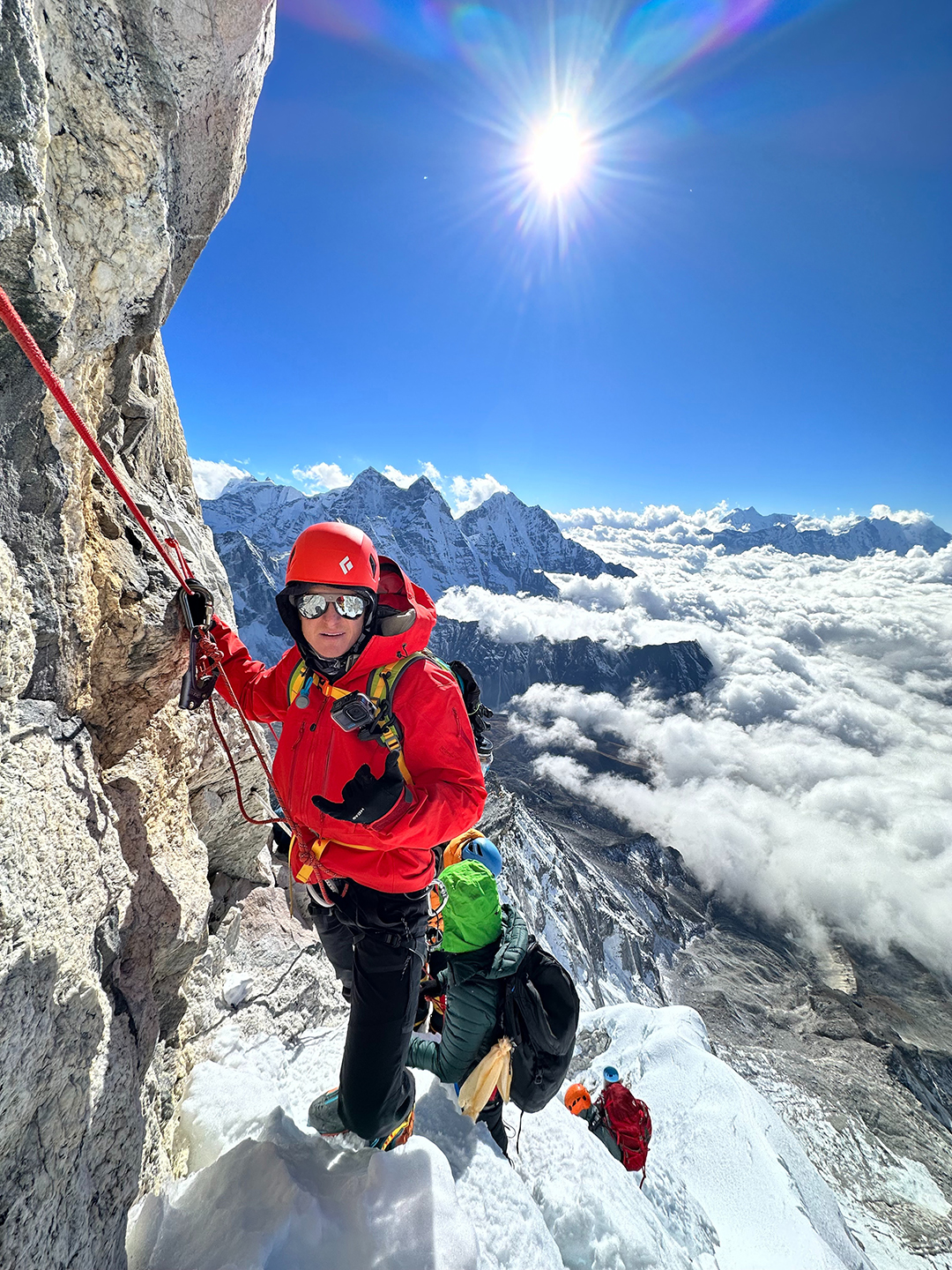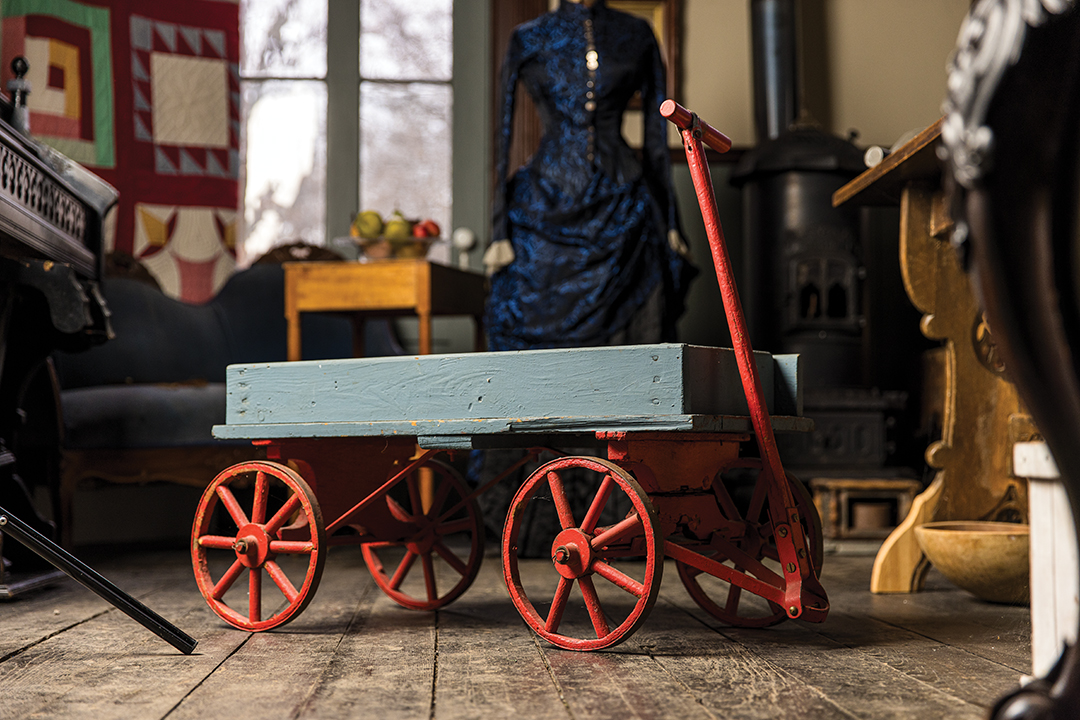
Three generations of the Beitler family.
Photographer details the importance of taking images of all generations.
Photographs document significant moments in our lives—pregnancies, births and birthdays; first days of school and graduations; engagements and weddings; and others. But there can be a very important part of life that goes mostly undocumented. As we get older and our own major life events arrive less frequently, we tend to be relegated to only group photos or even step away from the camera shot altogether. How about rethinking that photographic narrative?
“The problem is that these events are all over by about age 35–40, and then we start to show physical signs of aging and think that we are now too old, too busy, too overweight or too this or that to pay for a professional photo,” says Emily John, owner of Emily John Photography in Excelsior. “I’d argue that it’s very important to get photographed because we age and are constantly changing in our physical appearance. Life doesn’t stop after the first 40 years and neither should we stop celebrating the beauty of aging. It’s important to document your appearance not only for yourself, but also for all of the younger generations, who will look at this image as time goes on …”
John equates photographs with interactive timelines. “A photograph invites the viewer to become a part of that slice in time with you. Don’t wait another year or five years because it will never be a more perfect time than now to celebrate yourself,” she says.
John came to value photography at an early age and points to one of her grandmothers as an inspiration. “Every time I visited her house, I could see [photos] proudly displayed on all the walls, in albums stacked on the bookshelves and in prints tacked to the fridge,” she says. “I know what all my aunts and uncles looked like as kids and that my dad had leg braces when he was 2. I knew stories of my family from before I was born because we’d look through albums together … I remember her showing me photos of her mother, who had died when [my grandmother] was 23. Little did I know when she was telling me those stories that I would share in [my grandmother’s similar] fate, losing my mom to breast cancer when I was a senior in college. After my mom died, I visited my grandma a lot because it gave me comfort to know that I wasn’t alone in my experience. If I hadn’t seen those photos and asked to hear her stories, I might not have known this about her.”

While it’s not difficult to highlight the importance of having photographs taken throughout life, putting oneself in front of a lens isn’t always easy, but time can see things the present ignores or isn’t ready to view. “We are very critical of [photographs] at first but tend to really value and love them as time goes on,” John says. She recalls crying after seeing photographs of herself about six months after her first son was born. “I still had the baby weight, and my eyes had bags under them for the lack of sleep … I thought I looked terrible. That was 11 years ago, and now when I see those photos of me, I see a totally different person. I see a younger, vibrant version of myself, who’d just birthed and was successfully raising a little baby boy. I see myself before my gray hair and laugh lines set in. I see my favorite sweater I used to wear all the time and my glasses before I got [eye surgery]. When I see that photograph, I am flooded with the memories of that time in my life.”
While photographs tell a story of the subject at the time of the photo, John interestingly points out that they also highlight what the subject can’t know about the future. “[In a photograph], you see the subject as having lived this life up to the point the shutter was snapped, but then time stops for them,” she says. “They have no knowledge of the future beyond that point … There’s iconic images during World War II of men standing together smiling [prebattle] and, in that moment, having no knowledge of what was about to happen. I recall an image of [a] little girl standing on her farmstead 50 years ago, and that same spot now houses a massive suburban development. Then there’s photograph of my mom, sitting in the grass holding out her hand to help me take my first steps, totally unaware that she would die of breast cancer only 20 years later at 44 years old. It’s a bittersweet reminder that life is finite.”
There are different avenues to taking those meaningful photographs. It’s a safe assumption that the vast majority of cellphone owners use the camera function more often than grabbing a digital or film camera. While convenient, there are outcome differences between phone and traditional cameras and professional photography.

“I love that photography has become such an easy piece of life, and we are now able to document any and every detail on our phone,” John says. “But because of this commoditization, it’s easy to confuse a professionally-created photograph with a mass-produced digital file that pops up every once in a while on your Facebook feed.”
“These two things are about as different as a McDonald’s french fry and a celebratory anniversary dinner steak at Coalition,” John says. “You just can’t expect to get the same experience and product in a quick cellphone snap as you get when you hire a professional for a family heirloom that hangs above the sofa.”
Encouraging us to take or have images taken of us throughout life is only the first step, according to John. “… What I’ve noticed is that most people are so busy that, even if they have the digital files, those photographs will never see the light of day,” she says. After realizing that more than 25 percent of her clients’ digital galleries were never downloaded for printing, she changed her business structure, becoming a print portrait studio. “I create artwork that is beautifully photographed, hand retouched and then displayed in homes on only the highest quality archival materials,” John says.
“I specialize in printed products because I believe that a photograph should live out here in the real world,” she says. “… When you hold a photograph in your hands, it comes alive.”
Camera Ready
When taking photographs of anyone, regardless of age, including an item or activity that is important to the subject can add dimension and special meaning to the image. In doing so, it can provide—for generations to come—personalized details about the subject’s
personality and interests.
Athlete: Showcase former uniforms, equipment or medals and trophies.
Avid reader: Surround them with some of their favorite titles.
Collector: Spotlight some or all of the collectables.
Cook or baker: Consider photos of the person preparing a treasured or beloved recipe.
Crafter: Feature the tools of their trade or their creations.
Hunter or fisherman: Highlight them preparing gear, tying flies, organizing tackle and the like.
Nature lover: Utilize a favorite outdoor venue as the backdrop.
Raconteur: Feature facial expressions or gestures as they go about storytelling.
Traveler or adventurist: Include items they’ve culled throughout their travels.
Writer: Headline the photos with copies of their writings or add typewriters or other accoutrements as props.
Tips for the Taking
John has recommendations for the cellphone photographer. “First and foremost, hold your phone in your hand, look through the viewer and challenge yourself to take a photo that’s better than the last one,” she says.
Be your own photo editor, and consider what could make the photo better—zoom in or out, change your or the phone’s position, ask a subject a silly question to help relax his/her smile into a more authentic expression and more.

“When you start to notice what’s going on in the photos you take and start to think about how to make them better, you are engaging your creative mind,” John says. “Suddenly, a chore is turned into an engaging act of creativity. And being creative keeps us young and our minds sharp. When you develop that itch to take a better photograph, you might find yourself researching and experimenting and playing around with it. Photography can be really fun and a wonderful way to engage with the world around you.”
40 Over 40 Project
John is encouraging herself to photograph women at different stages in their lives, so she launched the 40 over 40 Project.
“This year, I’d love to photograph 40 women in their 40s, 50s, 60s and beyond to document that not only is aging beautiful, (women in this age group are rarely represented in our media even though they are the foundation of our society), but also, it’s important to get professional photos of yourself at every age,” she says.
John is offering the paid photography services and has thoughts of presenting some of the images in a local gallery showcase.
Emily John Photography
35 Water St. Suite 202, Excelsior; 612.229.9334
Facebook: EmilyJohnPhotography
Instagram: @emilyjohnphotography






















